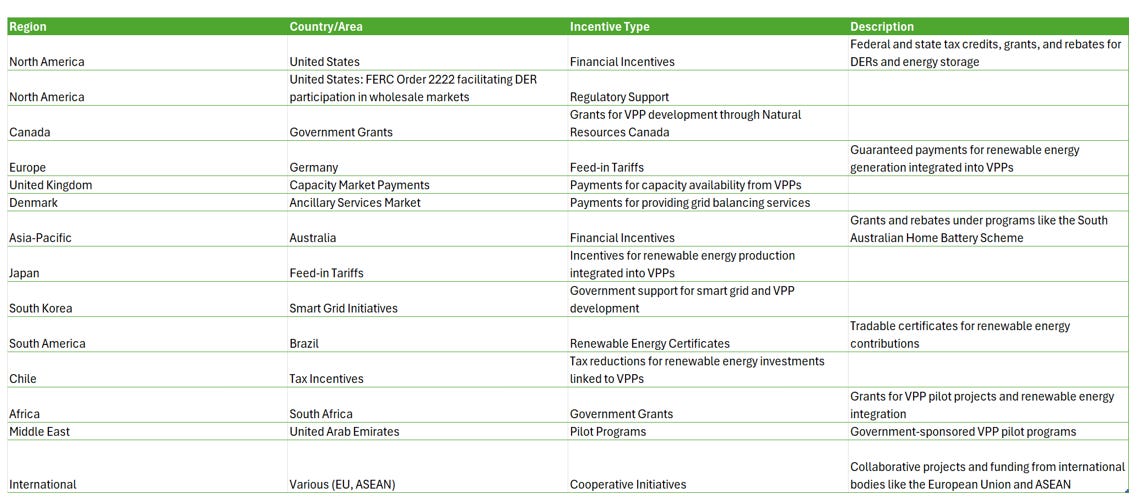Is your home part of a virtual power plant? It can be and here is what you need to know. Subscribe now to ensure you are caught up with the climate dictionary.
What is a Virtual Power Plant (VPP)?
A Virtual Power Plant (VPP) is an interconnected network of decentralized energy resources, such as solar panels, wind turbines, battery storage systems, electric vehicles, and demand response mechanisms. Unlike traditional power plants that rely on a single, centralized source of generation, VPPs aggregate the capacity of various distributed energy resources to function as a unified, flexible, and reliable power source. The primary objective of a VPP is to balance supply and demand, enhance grid stability, and maximize the utilization of renewable energy.
Key Components of a VPP
Distributed Energy Resources (DERs):
Renewable Energy Sources: Solar panels, wind turbines, and other renewable energy installations.
Energy Storage Systems: Batteries and other storage technologies that store excess energy for later use.
Flexible Loads: Devices and systems that can adjust their power consumption in response to grid conditions, such as smart appliances and HVAC systems.
Electric Vehicles (EVs): EVs can both consume and supply power to the grid, acting as mobile storage units.
Communication Infrastructure:
IoT Devices: Internet of Things (IoT) devices for real-time monitoring and control of DERs.
Smart Meters: Devices that measure energy consumption and production in real-time, facilitating dynamic pricing and demand response.
Energy Management Systems (EMS):
Centralized Control Platform: Software that aggregates data from DERs, forecasts demand, and optimizes energy flow.
Advanced Analytics: Algorithms and artificial intelligence (AI) used for predictive maintenance, demand forecasting, and energy optimization.
How VPPs Work
VPPs operate by coordinating and optimizing the performance of their constituent DERs. Here’s a step-by-step overview of how a typical VPP functions:
Source: Baker Home Energy
Data Collection:
DERs continuously collect data on energy production, consumption, and storage levels.
Smart meters and IoT devices transmit this data to the centralized control platform.
Data Analysis and Forecasting:
The control platform uses advanced analytics to process the collected data.
Predictive algorithms forecast energy demand and supply, considering factors like weather conditions, historical data, and market prices.
Optimization:
Based on the forecasts, the EMS optimizes the operation of DERs to balance supply and demand.
The system may instruct batteries to charge or discharge, adjust the output of renewable energy sources, or trigger demand response actions to reduce consumption.
Real-Time Control:
The control platform sends real-time signals to DERs, adjusting their operation to ensure grid stability and efficiency.
Dynamic pricing mechanisms incentivize consumers to shift their usage patterns to align with grid needs.
Benefits of VPPs
Enhanced Grid Stability:
VPPs provide grid operators with greater flexibility and control, improving the ability to manage fluctuations in supply and demand.
Increased Renewable Energy Utilization:
By integrating and optimizing renewable energy sources, VPPs help reduce reliance on fossil fuels and lower greenhouse gas emissions.
Cost Savings:
Efficient management of DERs can reduce energy costs for consumers and decrease the need for expensive grid infrastructure investments.
Resilience:
VPPs enhance the resilience of the energy system by decentralizing power generation and reducing vulnerability to single points of failure.
Empowerment of Consumers:
VPPs enable consumers to actively participate in the energy market, providing opportunities for additional revenue through demand response and energy trading.
Challenges and Considerations
Technical Complexity:
Integrating diverse DERs with varying characteristics requires sophisticated technology and robust communication infrastructure.
Regulatory and Market Barriers:
VPPs operate in a complex regulatory environment, and market rules must evolve to accommodate their unique capabilities and business models.
Cybersecurity:
The interconnected nature of VPPs makes them susceptible to cyberattacks, necessitating stringent cybersecurity measures.
Consumer Engagement:
Successfully engaging consumers and encouraging their participation in VPP programs can be challenging but is crucial for maximizing benefits.
VPP incentives worldwide:
VPP incentives worldwide are typically centered around:
Energy Storage: Subsidies and rebates for batteries and other storage technologies.
Demand Response: Payments and incentives for reducing or shifting energy use during peak periods.
Renewable Energy Support: Feed-in tariffs, grants, and loans for renewable energy projects that can be integrated into VPPs.
Capacity Markets: Payments for providing capacity to the grid, encouraging VPP participation.
Pilot Programs and Demonstrations: Government-supported trials and pilot projects to develop and test VPP technologies and models.
Future Prospects
The future of VPPs is promising, with ongoing advancements in technology, policy support, and market innovation driving their growth. Key trends shaping the future of VPPs include:
Integration of Artificial Intelligence (AI):
AI and machine learning will play a critical role in enhancing the predictive capabilities and optimization efficiency of VPPs.
Expansion of Energy Markets:
Emerging energy markets, including peer-to-peer energy trading platforms, will create new opportunities for VPPs to operate and generate value.
Policy and Regulatory Support:
Governments and regulatory bodies are increasingly recognizing the value of VPPs and implementing supportive policies and incentives to accelerate their adoption.
Technological Innovation:
Continued innovation in energy storage, IoT, and blockchain technology will enhance the functionality and reliability of VPPs.
Virtual Power Plants represent a paradigm shift in energy management, offering a decentralized, flexible, and sustainable approach to meeting our energy needs. By harnessing the collective power of distributed energy resources, VPPs can enhance grid stability, increase renewable energy utilization, and provide economic benefits to consumers and utilities alike. As technology and market dynamics continue to evolve, VPPs are poised to play a pivotal role in the transition to a more resilient and sustainable energy future.
Infographic of the week - Carbon credit buyers vs sellers
Source: Visual Capitalist
Last week we summarized the carbon credit market. Here is a handy infographic that summarizes where the buyers of these credits are based at and where the projects are located.
What questions do you have about the use of carbon credits?
Follow me on Instagram - @onedegreeapart





